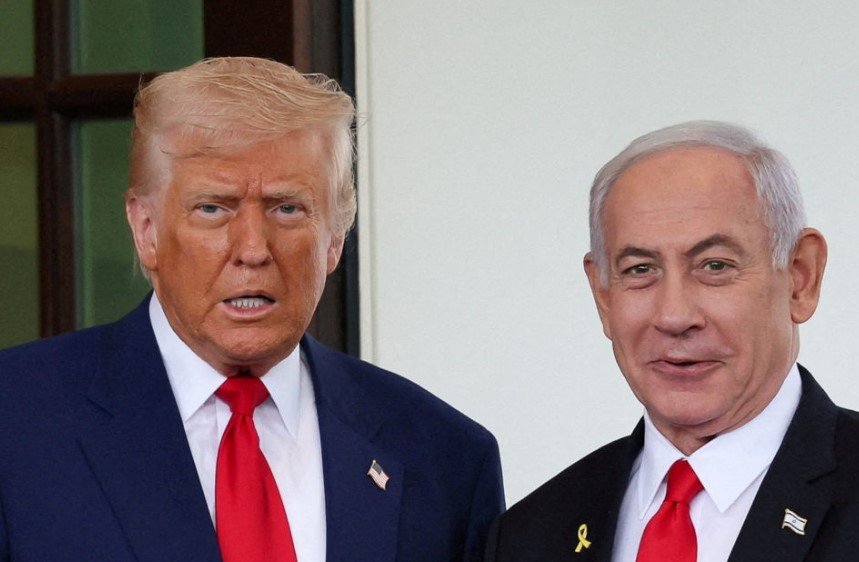Despite two days of high-level Oval Office meetings, no ceasefire announcement emerges; U.S. envoy delays travel to Qatar, signaling talks still on shaky ground
Prime Minister Benjamin Netanyahu left the White House late Tuesday after a second closed-door meeting with U.S. President Donald Trump—this time without the fireworks or headlines many had braced for. There was no podium, no handshake in front of reporters, and most notably, no deal.
After a week of quiet optimism surrounding a possible Gaza ceasefire and hostage agreement, the tone from Washington turned noticeably muted. The 75-minute meeting, which included U.S. Vice President JD Vance and special envoy Steve Witkoff, was described by two officials as “serious, focused,” but ultimately inconclusive.
No Announcement, No Breakthrough—At Least Not Yet
The absence of a public statement after the meeting was telling.
Earlier in the day, the White House had quietly added the Netanyahu meeting to Trump’s schedule, fueling speculation that some kind of deal announcement was imminent. Instead, Netanyahu exited via a side door with no press briefing, and Trump’s press office issued no readout.
One official familiar with the talks told The Times of Israel, “There was movement, but not enough to justify a statement.” The Israeli delegation, which had come prepared with proposals and revisions, reportedly left disappointed but not shocked.
Witkoff’s decision to delay his planned flight to Doha—where indirect talks between Israel and Hamas have been crawling along for weeks—only reinforced the message: things aren’t ripe yet.

The Envoy Hits Pause, Qatar Awaits
Steve Witkoff had been scheduled to fly out Tuesday evening to rejoin proximity talks hosted by Qatar. The Doha round has involved both U.S. and Egyptian mediators shuttling proposals between Hamas negotiators and Israeli intelligence officials.
But with no clear direction emerging from the Oval Office, Witkoff chose to stay put.
A U.S. official described the move as “strategic,” not symbolic. “He’s not flying across the world just to kill time. The President wants to see actual alignment first,” the source said.
The delay marks the second time in two weeks that Witkoff has held off travel due to gaps between Israeli and Hamas positions on sequencing—particularly on the order of hostage releases and Israeli military withdrawals.
Two Days, Two Meetings, Still No Public Deal
This week’s back-to-back meetings between Netanyahu and Trump had raised eyebrows across the diplomatic community. Rarely do world leaders meet twice in 48 hours without something major to show for it.
According to Israeli officials, Netanyahu came into Tuesday’s meeting prepared to “finalize contours” of a deal brokered by Qatari and U.S. negotiators. Trump, for his part, had expressed optimism earlier in the week that a “bold agreement” was within reach.
So what happened?
Several aides cited last-minute objections from Israel’s war cabinet over security guarantees, and uncertainty over Hamas’s willingness to allow international monitoring during the ceasefire’s first phase.
Another key sticking point: the sequence and identity of hostages to be released. Hamas is insisting on a phased release tied to Israeli withdrawals from key areas in Gaza, a demand Israel has so far resisted.
Behind the Curtain: Diplomats Tread Water, Pressure Mounts
While the headlines may be quiet, the backchannels are anything but.
One U.S. diplomat called this moment “a cocktail of frustration and hope.” Israeli officials continue to liaise with CIA chief Bill Burns, who remains deeply involved from afar. Egyptian intelligence is also reportedly pressuring Hamas to soften its insistence on simultaneous conditions.
In fact, some European diplomats believe Hamas may be stalling until Eid al-Adha passes, calculating that religious and political dynamics could swing more public pressure on Israel to concede more.
And yet, the longer this drags, the more unpredictable it becomes.
Here’s what one senior aide summed up:
-
“Trump wants a win. Netanyahu needs closure. But Hamas smells leverage.”
What Comes Next: All Eyes on Doha, Again
As of now, Witkoff is expected to delay his Doha trip by at least 48 hours. Whether he even boards that plane will likely depend on whether Tuesday night’s post-meeting calls bear fruit.
Sources say the U.S. has proposed a revised three-stage ceasefire model. The updated structure includes:
-
A 10-day halt in fighting with humanitarian aid surge
-
Partial Israeli pullback from Khan Younis and Rafah
-
Staggered release of Israeli civilians, followed by soldiers
Israel is reportedly seeking firmer third-party guarantees that Hamas will not exploit the pause to regroup.
Meanwhile, a draft table circulating among diplomats outlines two alternative timelines—one with hostage releases front-loaded, and another where military withdrawals are backloaded. Neither has won full buy-in.
Domestic Politics Add Layers of Complexity
Back home, Netanyahu is under pressure from both the Israeli left and right. Far-right allies have threatened to collapse his fragile coalition if he agrees to “any ceasefire that leaves Hamas intact.”
That threat looms large.
Even as he negotiates abroad, Netanyahu’s team must manage political fault lines at home. Trump, too, has a political lens on the deal, with the U.S. presidential election cycle beginning to heat up.
For now, both leaders have avoided making noise. But make no mistake—pressure is building.
